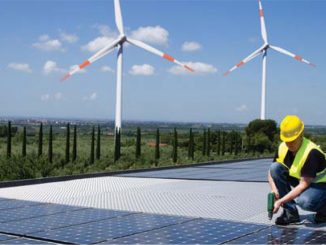
The fast growing solar segment owes its growth to the uptake in project installations. To fully utilise the solar potential from the large number of solar projects, it is important for them to be efficient and well constructed. For a project to be robust, the solar panels must also be mounted properly in order to absorb the maximum amount of sunlight as well as withstand environmental conditions. Solar panels are not directly attached to the ground or rooftops; rather, they need to be mounted on supporting structures. Mounting structures for solar panels are useful in securing them safely on the surface of the installation. They are usually placed in a way that allows the solar panel to get maximum inclination angle on the surface. Solar module mounting structures can be used to set up rooftop plants, ground-mounted solar and even tin-shed mounting structures such as carports. These days, specialised mounting structures for floating solar projects are also being considered.
Types of mounting structures
Mounting structures have evolved over the years in terms of weight, material, adaptability and cost, making them durable so that they can withstand the weight of solar panels. Large photovoltaic (PV) modules are more likely to encounter vibration problems and the possibility of being blown away by strong winds. Thus, the increase in module sizes has led to a corresponding emphasis on strengthening mounting structures as well. Further, mounting structures of proper quality must also be able to endure high wind speeds and a range of temperatures. They require customisation to adapt to the topographical features and weather conditions on site.
The key types of mounting structures are ground-mounted racks, roof-mounted racks, top-of-pole-mounted racks, side-of-pole-mounted racks and tracking-system-mounted racks. Of these, four are fixed-angle types, and one is variable-angle type.
Ground mounted
Such solar projects typically use foundation mounting structures. In the process, land is excavated to put in vertical pipes, surrounded by a concrete foundation. Other types of ground-mounted structures are ballasted and pole-mounted structures. In ground-mounted structures, pole-mounted racks are usually adjustable and allow panels to tilt up or down for maximum solar absorption. There are also tracking system-mounted racks, which can be used for solar tracking systems and solar water pumping systems. Even among ground-mounted plants, mounting structure designs can differ on the basis of land technology, soil type and other weather-related parameters.
Rooftops
Solar rooftop projects use roof-mounted racks. To mount solar panels, techniques such as rail mounting, where panels are attached to the rails using clasps; ballasted mounting, in which panels are directly fixed to the roof through hardware; and shared rail mounting, where two rows of panels are attached to the same rail are used. Another common technique is mounting solar panels on elevated structures. In an elevated structure, panels are installed at a height of 12-15 feet. This is often preferred by consumers, as it does not take up the entire surface space and can also act as a shed-like structure on roofs.
Floating PV
Mounting structures for floating solar plants are also coming up. These rely on a special mounting system design, which prevents contact between solar panels and the sides of the waterbody. Mounting structures for floating solar can be helpful for installing solar projects on water surfaces such as ponds, rivers, reservoirs and off-shore PV applications. Among recent developments in this space, Chinese mounting system provider Mibet has developed a structure for floating PV installations designed to endure low temperatures and withstand wind and snow loads of up to 42 metres per second and 1 kilonewton per square metre respectively.
Recent developments
In correspondence with the Make in India initiative, there has been a greater emphasis on local manufacturing of solar components. While modules have taken the limelight, module mounting structures, which make up between 9 and 15 per cent of the total project cost, are also increasingly being manufactured locally. In a recent development, Indian solar manufacturer Gautam Solar has expanded its production footprint by boosting the capacity of its manufacturing unit of solar module mounting structures by 10 times from 50 metric tonnes per month to 500 metric tonns per month. Based in Haridwar, the state-of-the-art unit will produce module mounting structures for solar pumps, solar power plants (utility scale and rooftops), solar street lights and high masts.
Outlook
Given the tall targets for solar power capacity in India, the market for solar components is expected to grow. Thus, the demand for mounting structures is also on the rise. Since they form a significant part of a solar plant’s cost, deeper innovation will be needed in material and structural design to bring down costs and make the structures resistant to even harsher conditions.



